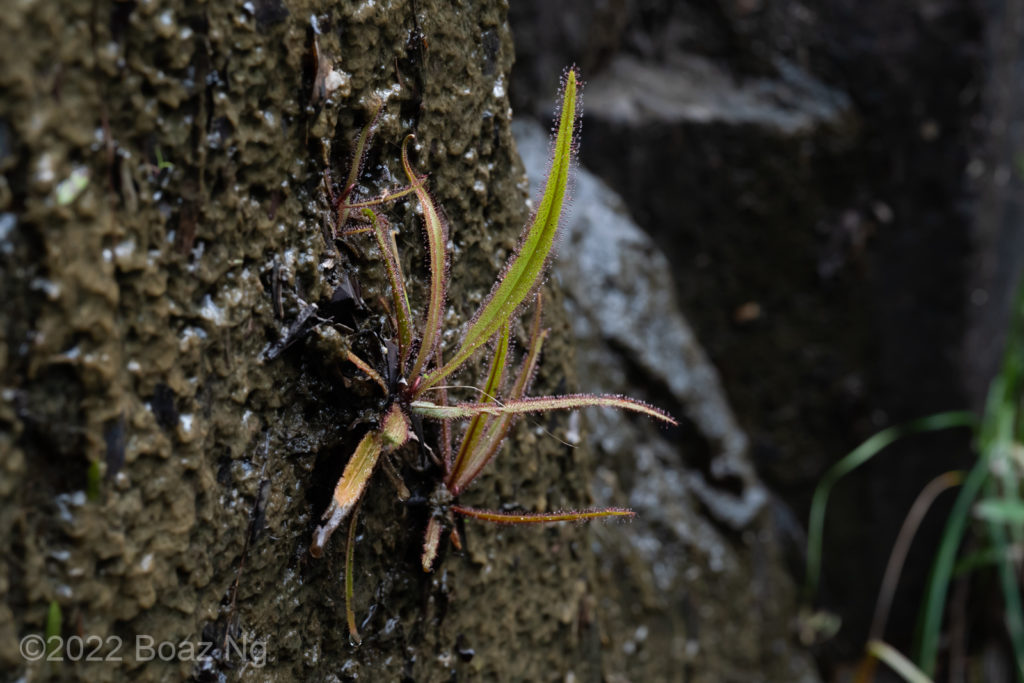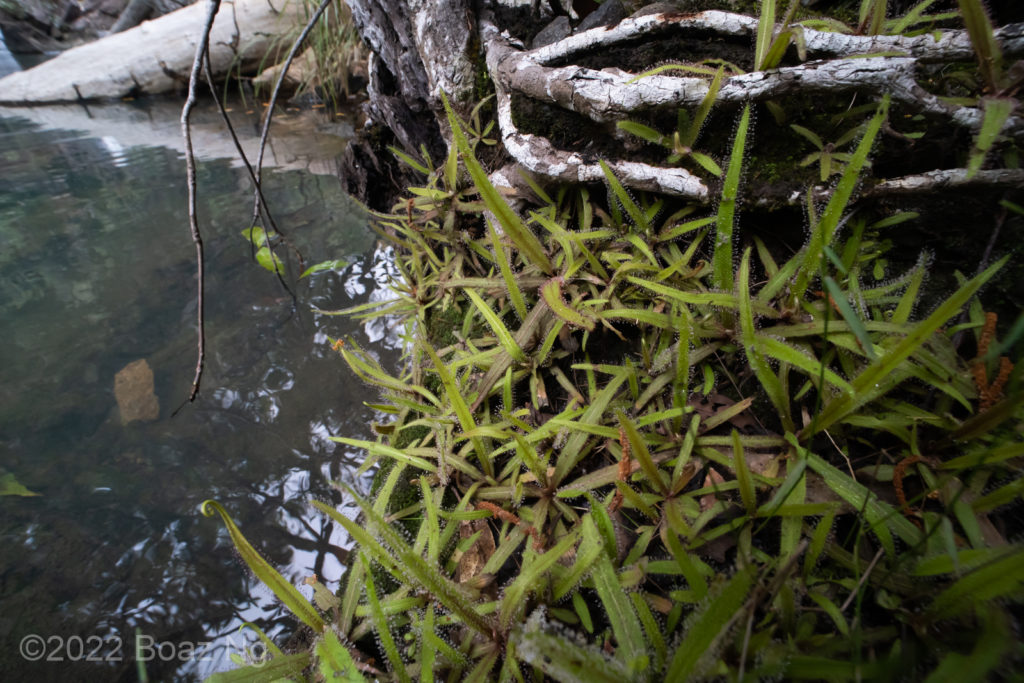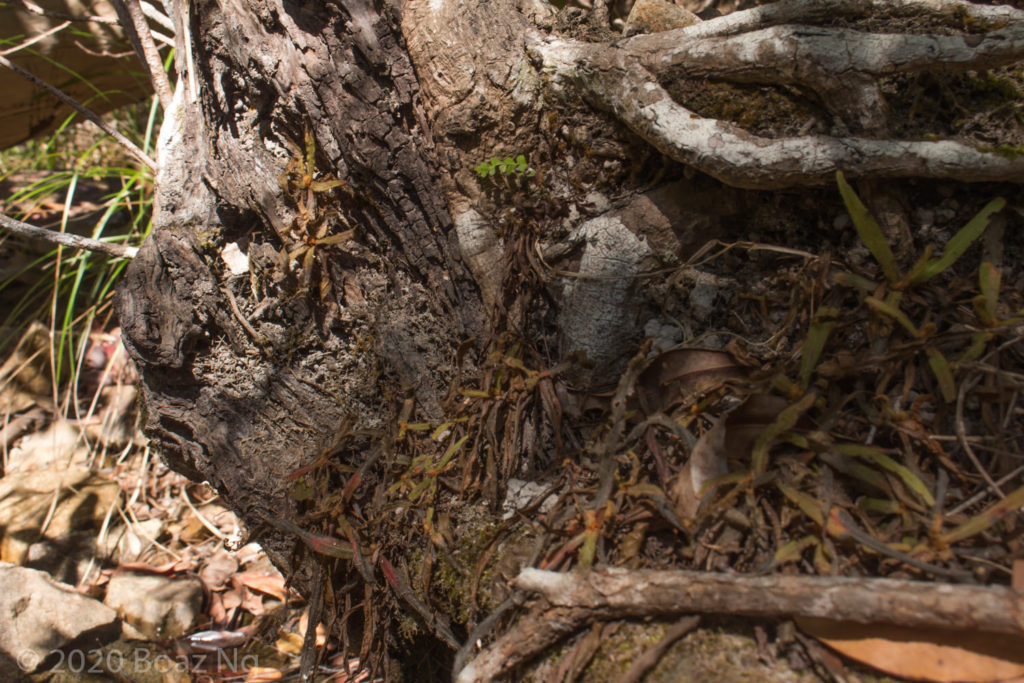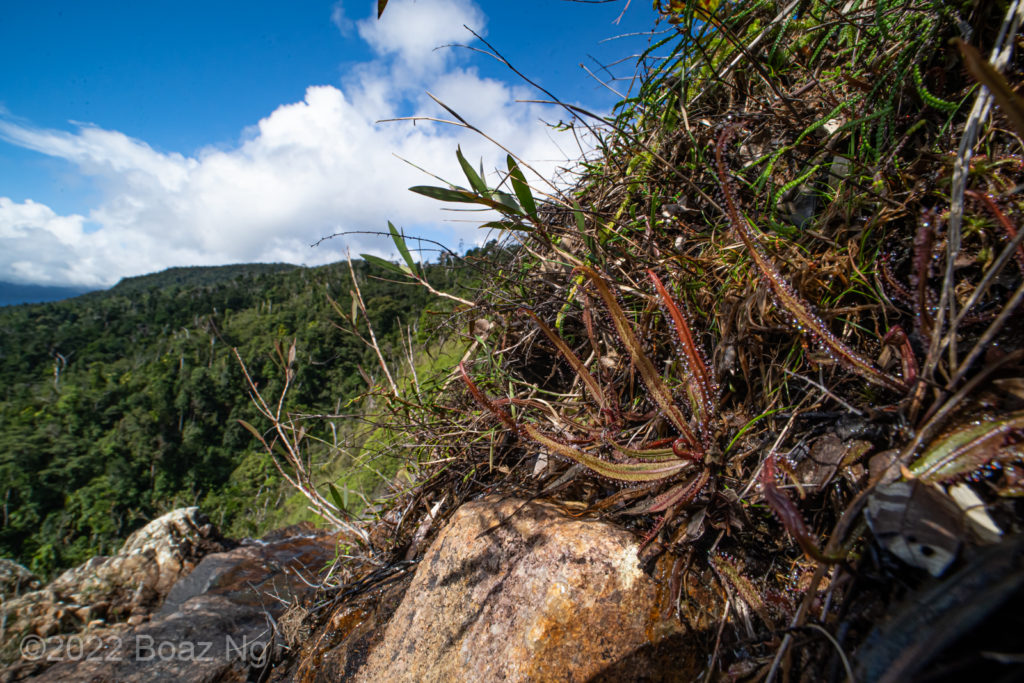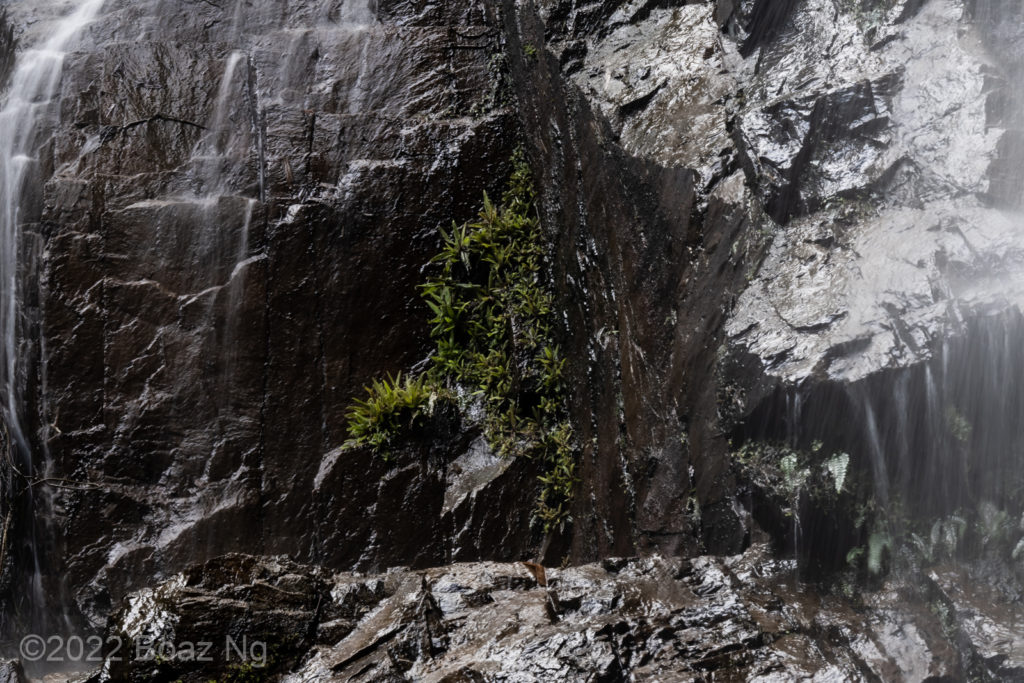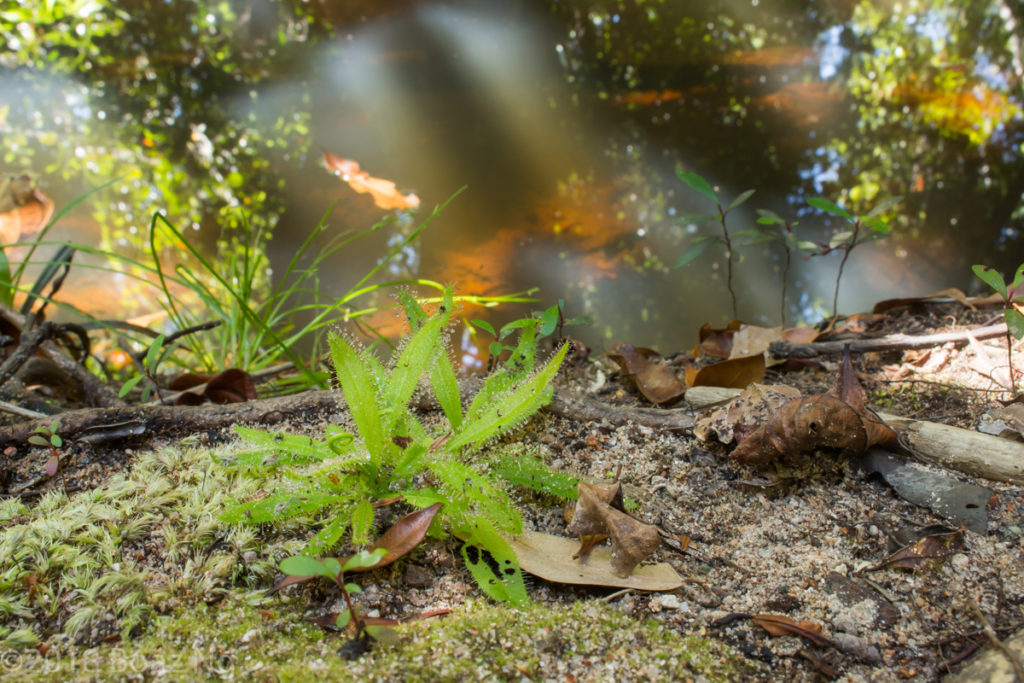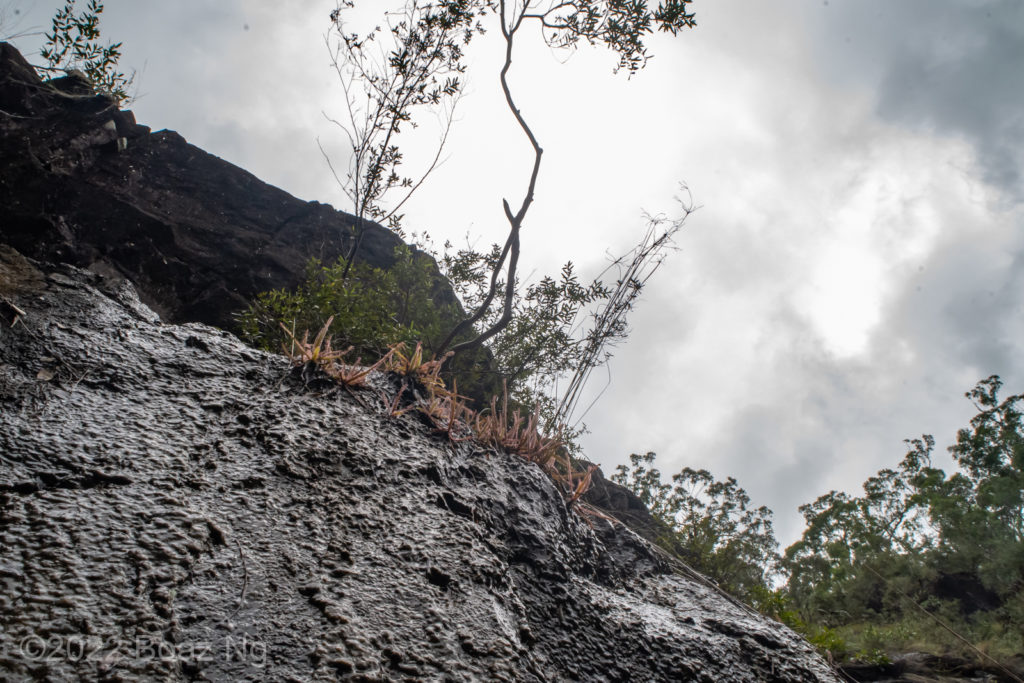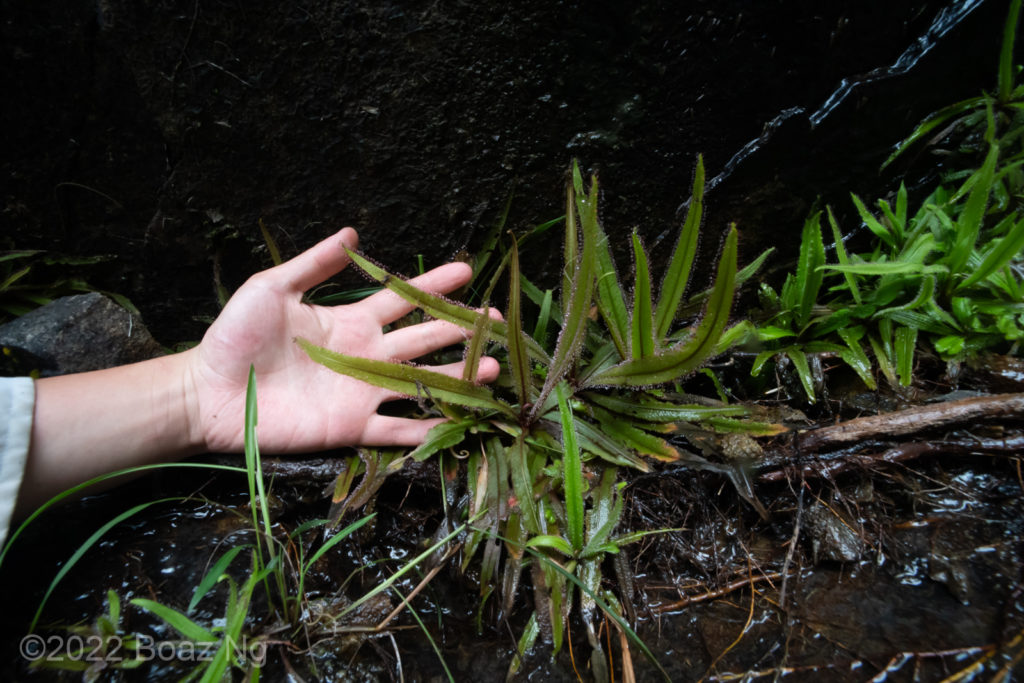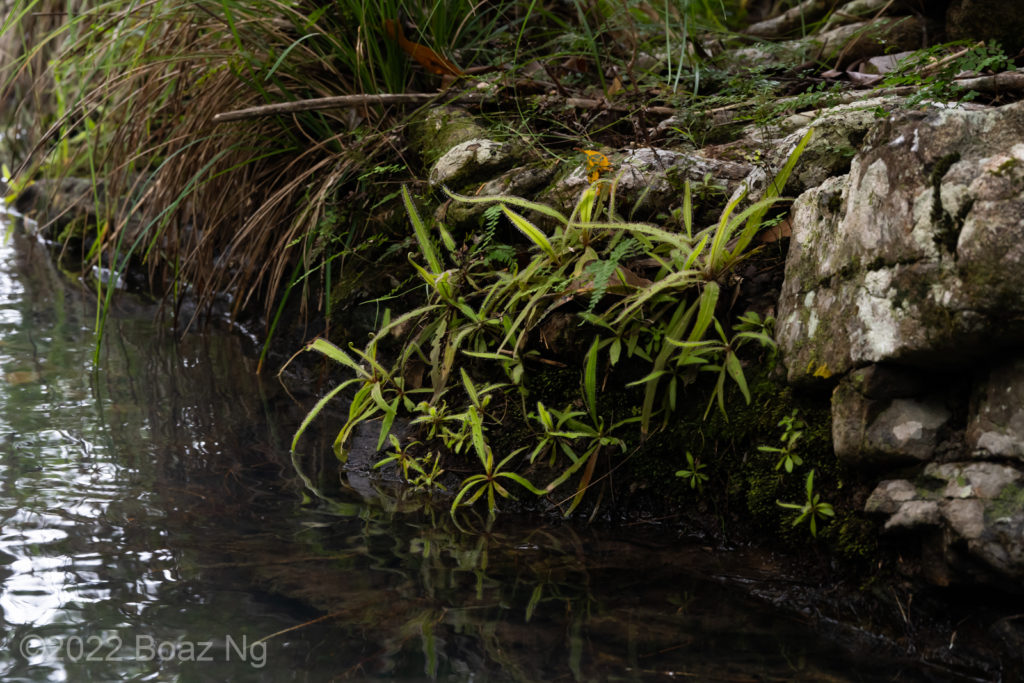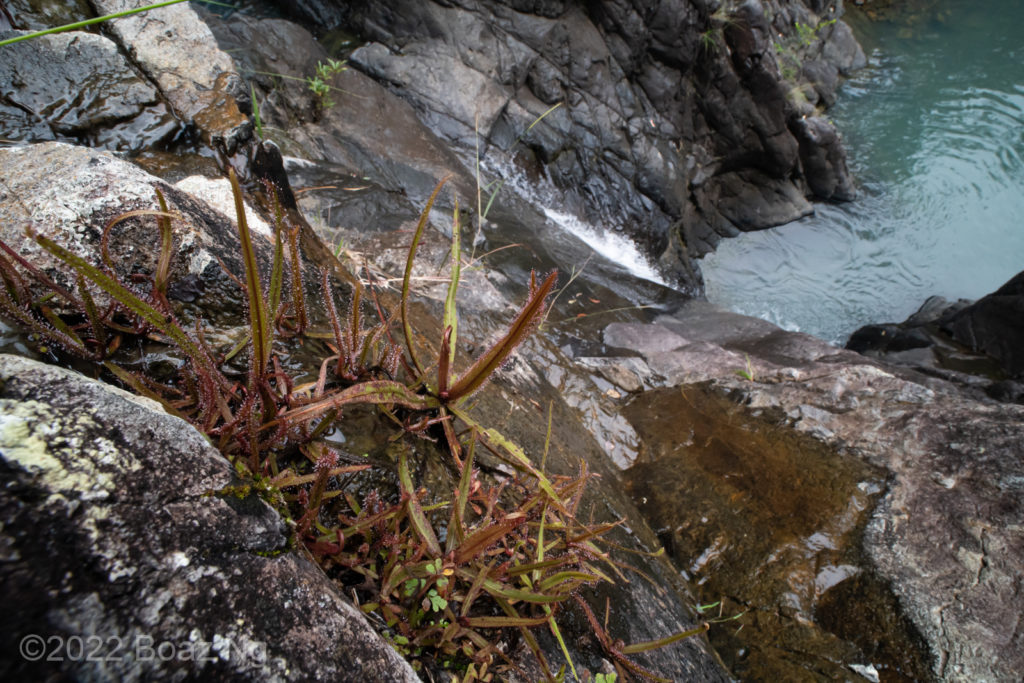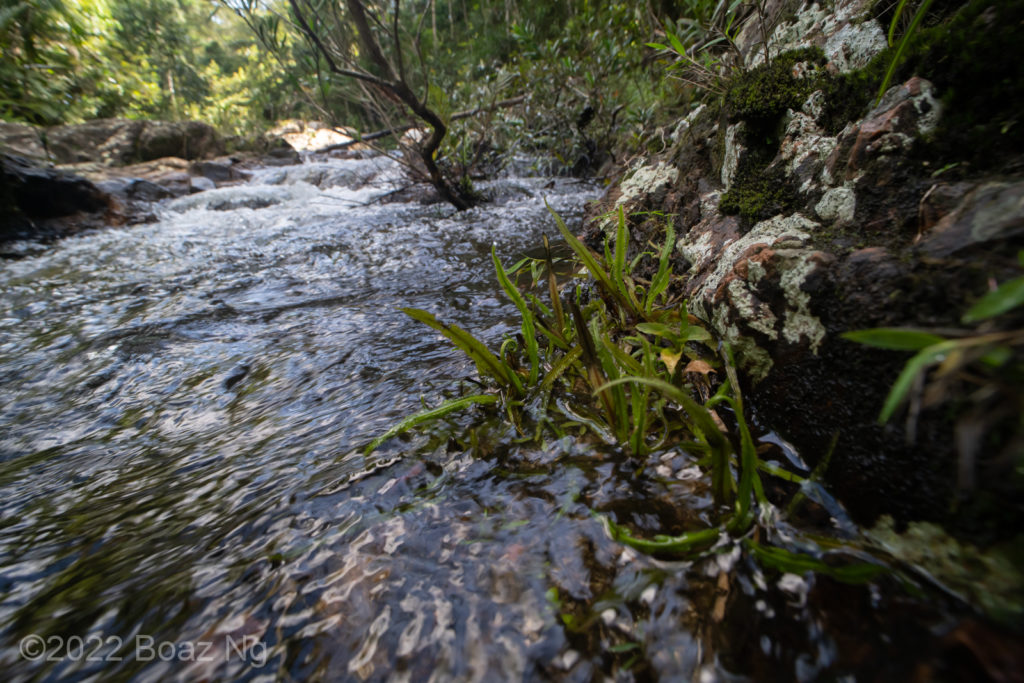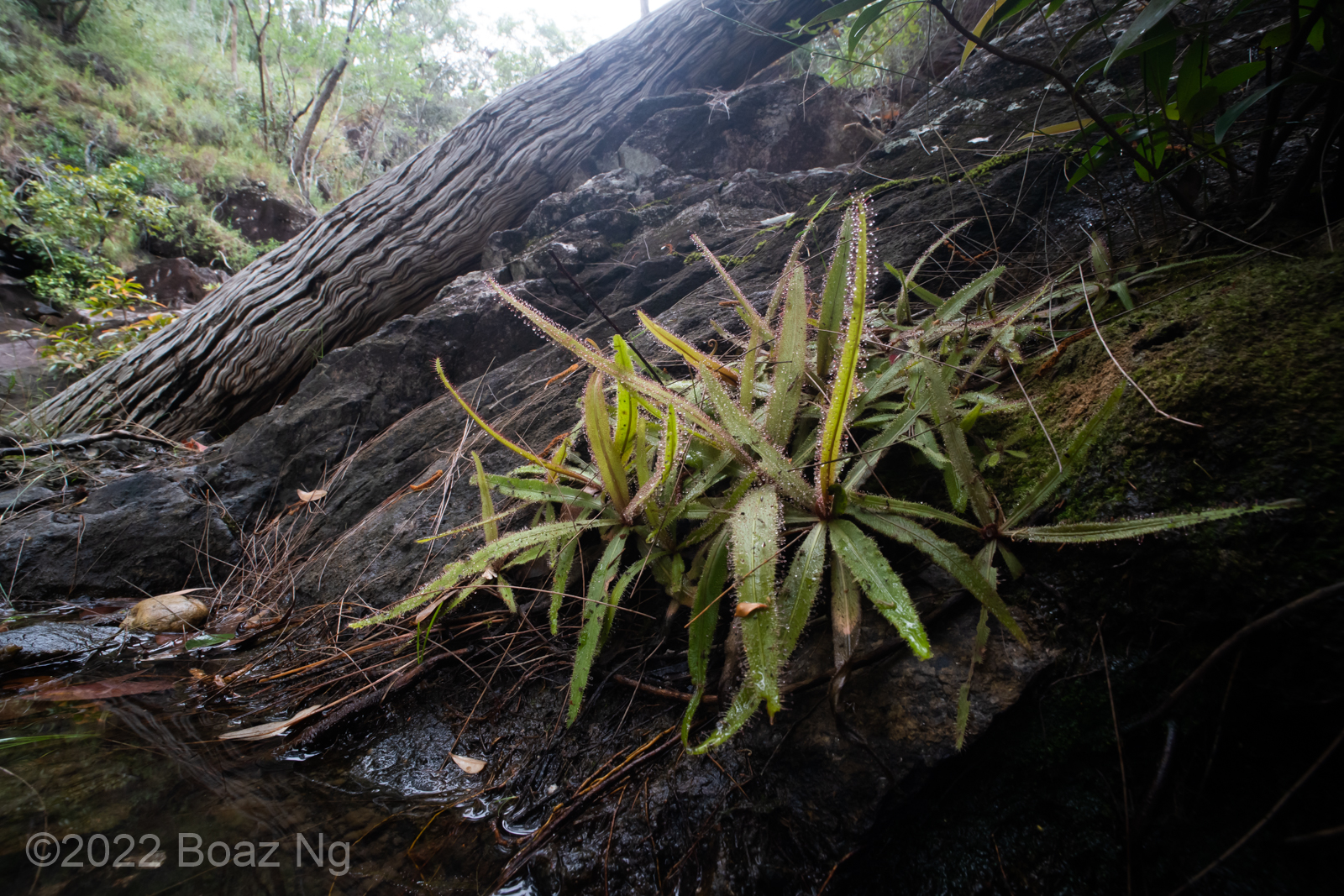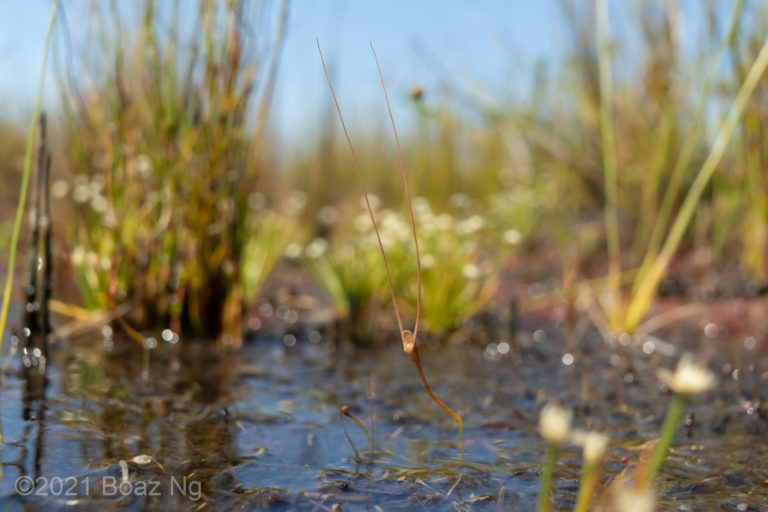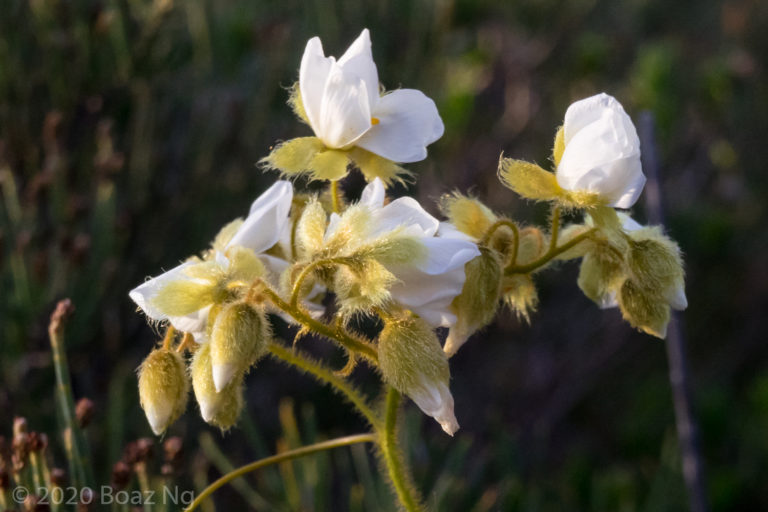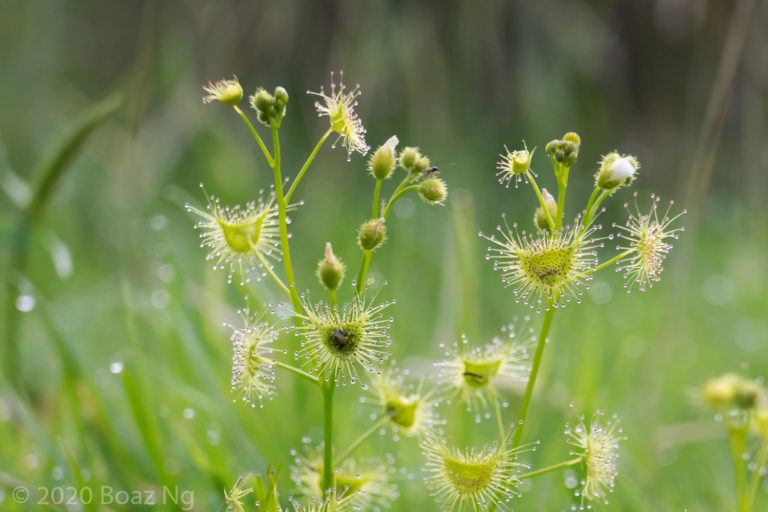Drosera adelae is a rainforest sundew endemic to the coastal ranges on and adjacent to Hinchinbrook Island, Far North Queensland. The species is associated with creek lines in a variety of habitats from deeply shaded rainforests to exposed waterfalls.
Drosera adelae is identified by its broad, elongated leaves which taper to a sharp point. The upper surface of the leaf is covered with dew-producing tentacles. These leaves are wider and greener in low light, and narrow and red in higher light. Individual leaves are usually 5 – 15cm long. The inflorescence forms a spiralling raceme, with small star-shaped flowers that are red in colour (although usually lighter in dark conditions).
The species grows in a wide range of lighting conditions but is always associated with creeks and seepages. It is commonly observed on wet rockfaces adjacent to waterfalls in the mountainous ranges within its distribution. These waterfalls are typically exposed to good light levels and have less competition from competing plants. The species also grows on the sandy banks of creeks down to sea level, under both sparse canopies and deeply shaded rainforest. In such habitats, the populations can be ephemeral, being swept away or buried by frequent wet-season flooding events.
The Hinchinbrook Coast is under the influence of the monsoon, with distinct wet and dry seasons. At the height of the dry season, some populations enter dormancy, dying back to a small bud or down to the roots.
Drosera adelae is closely related to three other rainforest sundews, which are collectively referred to as the ‘sisters’ of Queensland. It is distinguished from D. prolifera, D. schizandra and D. buubugujin by its long, lanceolate leaves (the other species have either rounded or very broad leaves). The plants share similar red flowers and tentacle morphology.
